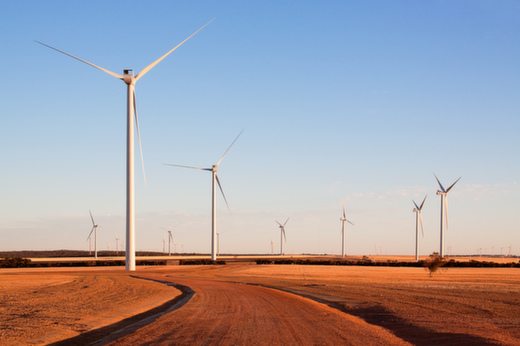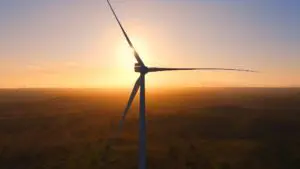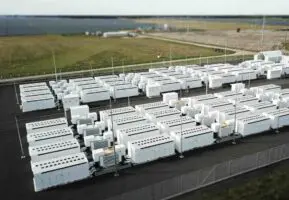The Australian cleantech sector boasts revenue of $29 billion a year and employs 53,000 people, making it larger than Australia’s automotive manufacturing industry and one quarter the size of the country’s entire manufacturing sector.
A new study produced by research and advisory firm Australian CleanTech says an analysis of 1,340 Australian cleantech firms shows they were involved in capital transactions totalling $1.3 billion in the 2012 calendar year in 126 separate capital transactions.
Australian Cleantech Review 2013 says the cleantech sector, which is defined as products and services that have both economic and environmental benefits, and includes renewable energy, water, waste and recycling, energy efficiency and carbon trading, employs five times as many people per dollar of revenue than general manufacturing. The big growth sectors were in solar, water, energy efficiency and green buildings.
NSW and Victoria were the most active states, with the water, wind, solar and environmental services sectors all generating more than $1 billion in revenue in the last calendar year. Queensland and WA had comparatively little cleantech activity because they focused on mining. Despite accounting for just 0.07 per cent of the total number of registered companies, just 0.7 per cent of the listed company market capitalisation and only 0.5 per cent of the working population, the cleantech sector generated 2.0 per cent of the country’s GDP in 2012, up from 1.8 per cent in 2011.
However, the study’s lead author, John O’Brien, the managing director of Australian Cleantech, says Australian is at risk of falling further behind the world in the cleantech sector, particularly the leading Asian economies.
“The government’s industry development programs in 2012 have provided some assistance to the sector, but we still have a long way to go before we are in the premier league,” O’Brien says.
“We work extensively in China and Korea sourcing investors for the Australian market and the difference in the growth in those markets compared to Australia is huge. We have some great technologies and expertise and we have the opportunity to take these to the world.”
The report includes some forecasts for the cleantech trends for 2013.
The highlights include a prediction that Australia is heading for an emissions trading scheme, rather than a fixed carbon price, whichever party wins government, and that cleantech, largely misunderstood or ignored in Australia, despite its growing size, will come to the attention of more people in 2013, particularly to customers and investors.
And it predicts growing interest in investment from China and South Korea, which it describes as a significant opportunity for the Australian clean-tech sector. A separate story highlighting the likely technology trends in Australia in 2013 can be found here.
Here they are in no particular order:
Politics plays snap: Regardless of the election result, it seems likely that the winner will move from a fixed price to an ETS earlier than the current 2015 to take advantage of the cheaper international certificates. This will lead to cuts to the Clean Energy Finance Corporation and some of the ARENA programs.
Industry adopts resource efficiency: Industry is increasingly demanding cleantech solutions that improve their efficiency of operation and have immediate bottom line benefits. Energy Efficiency has been the first target of action but, during 2013, industry will adopt a focus on Resource Efficiency with the inclusion of efficiency solutions for energy, water, waste or materials.
Downside drivers change community conversations: The poor air quality in cities, water shortages in agricultural areas, contaminated land and water, increase severe storm events and many other characteristics will continue to be reported. But during 2013, this will start to take hold in the popular press and start to change the Community Conversations and the consequent political discussions on the need for cleantech
Global Cleantech Temptation: The extent of the global growth and investment into cleantech is largely ignored or misunderstood in Australia. In 2013, there will start to more coverage of the Opportunities of Cleantech that in turn will lead to increasing customer and investor interest in the sector.
Wind energy flies again: With the RET uncertainty resolved, the demand for LGCs increasing from liable entities, turbine prices dropping and more mature investors starting to enter the sector, 2013 is likely to see a significant increase in wind farm development and construction activity in Australia. (RenewEconomy note: We’d really like to agree but think there is a lot of uncertainty over the Coalition’s position on this – even the right wing of the Labor Party).
Who needs a feed-in tariff? Solar pricing is now reaching a level where it is competitive with off-grid and onsite usage without a feed-in tariff. 2013 will see 5-10 commercial Scale Solar Projects commence construction and start to deliver power late in the year or in early 2014.
New tricks for financial jugglers: Environmental Upgrade Agreement finance has been slow take hold but will make further progress in 2013 through both Government facilitated schemes and through private funds using ESCo models.
Yuan and won flow freely: North Asian investment from China and Korea has started to explore the investment opportunities available in Australia. This is a very significant opportunity for the Australian cleantech sector because as this investment flow accelerates and starts to be seen as the usual way to secure finance, the lack of interest from Australian investors and the small scale of the local VC industry will then start to become irrelevant.
The full report will be released this week at functions at Perth and Brisbane








